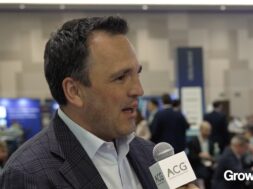Should I Stay or Should I Go Now?
The announcement of a merger or acquisition can destabilize a company’s workforce, but understanding the human element and planning appropriately can mean the difference between keeping and losing talent.

Change is always difficult, particularly when human emotions are involved. Mergers and acquisitions are by nature transformative, and although they have a strong financial component, they’re ultimately about people. Understanding that fundamental aspect and planning appropriately can mean the difference between a company that thrives postdeal, and one that loses its greatest asset: talent.
“The talent piece is a continued challenge when acquiring a company, particularly with small to midsize companies where the intellectual knowledge of your workforce is critical to the business,” says Steve Ellis, managing director of private equity firm Stratford-Cambridge Group. “You need to take important steps up front to hold on to key talent, while equally setting your business up to attract new talent.”
The mere announcement of a deal can destabilize a company’s workforce. When a merger or acquisition is announced, employees immediately wonder how the news will impact them. They can’t help but consider what the change will mean for their job, who their boss will be, and whether they want to stay—if that’s even an option.
Meanwhile, human behavior is hard to predict. Due diligence and deal negotiations are naturally rooted in the evident facts and what is most likely to occur. Even when companies consider worst-case scenarios and prepare for them, it’s difficult to anticipate every outcome, particularly as it relates to the workforce.
Traditional levers for retaining key employees are hard to pull as the post-deal work environment shifts from its current culture to one that has yet to be defined. Establishing clear goals, providing opportunities to learn, lead and grow, and recognizing and rewarding good work become difficult during the initial transition stages as managers determine what the new goals mean for them and their team.
In the face of these realities, how can a company retain the talent that will position the business for success? Yes, money talks and incentivizing people with an equity stake in the business can keep them in the short term. But for enduring success, a company must identify and retain critical layers of its workforce—not just management—and engage them as active contributors to the business.
“TYPICALLY, WORKFORCE CONSIDERATIONS AREN’T ADDRESSED AT THE START BUT ARE RELEGATED FOR LATER DISCUSSION … THIS IS A TACTICAL ERROR WITH GRAVE CONSEQUENCES.”
To retain and attract talent, prioritize the people during your planning early in the M&A process. First, get senior leaders aligned on the vision and the corresponding success metrics. Next, define the organizational structure and spend time determining the talent needed several layers deep. Finally, recognize that the workforce will be unsettled initially, so create nontraditional leadership opportunities, such as identifying and resolving decision-making logjams, to engage multiple levels of your workforce while helping to accelerate productivity.
Shift Your Thinking Around People
M&A deals can be parsed into three phases: before, during and after the deal announcement. Typically, workforce considerations aren’t addressed at the start but are relegated for later discussion as leaders focus on getting the deal done while leaving other details (including the people piece) to be addressed along the way. This is a tactical error with grave consequences.A successful merger or acquisition requires that senior leaders agree on the vision and that members of the workforce understand their roles and what’s required of them. Recognize that key talent exists several layers deep in the organization—not just at the top—and their expertise goes beyond their job definition. Maintaining tribal knowledge is critical, so consider repositioning employees in roles that inspire them and allow the company to retain valuable expertise.
By failing to consider the people doing the work and how best to motivate them, a company leaves employee buy-in around the new vision up to chance. This inevitably stalls productivity and further delays the integration plan’s execution.
Have a Process and Clear Metrics
Defining the organizational structure early, with a focus on common and consistent metrics, gives teams and individuals a clear sense of their roles and how they will be evaluated.
“Post-deal, performance can be clouded by a number of factors,” says Kevin Snyder, president of Speedgrip Chuck, a midmarket manufacturer that was acquired by Stratford- Cambridge Group in 2015. “We strive to ‘remove the excuses’ by targeting a simple and consistent set of metrics that help people focus while equally measuring their progress.”
Identifying early on where the teams will intersect and how decisions will be made is equally critical. Nothing can frustrate individual contributors more than being stalled in their ability to get things done. Minimize these aggravations by soliciting input from directors and managers once the deal has been signed so they can influence the structure and define a process that reflects the realities on the ground. Engaging the next level of talent to inform the organizational design can accelerate their buy-in and, ultimately, workforce productivity.
Learn, Lead and Grow
“One of the biggest obstacles to employee retention in midmarket companies is being able to provide opportunities for career growth and advancement, especially for younger talent, who will be hungry for development opportunities as the company shifts and evolves,” says Snyder, who joined Speedgrip in 2017.
To retain younger employees in particular, develop nontraditional leadership opportunities. Speedgrip identifies managers who can lead project teams, providing them with new ways to grow within the company. Those assignments can keep talent by providing both leadership benefits and an opportunity to own the vision.
Also encourage managers to identify ways they can learn, lead and grow, rather than waiting to be told what to do. People need not stay tied to their old job definition. When encouraged, employees will more actively seek new ways to contribute to the organization’s vision.
Having a personal stake in the business increases the likelihood that employees will stick around, which in turn raises the company’s prospects for long-term success—the ultimate goal of any M&A transaction.
This article originally appeared in the March/April 2019 issue of Middle Market Growth.

Jennifer Fondrevay is founder and chief humanity officer of Day1Ready, an M&A human capital consultancy focused on the people strategy of the M&A deal. She is the author of “NOW WHAT? A Survivor’s Guide for Thriving through Acquisition,” to be published in 2019.


